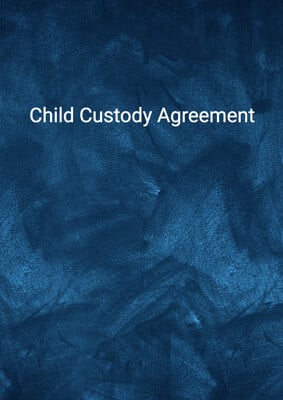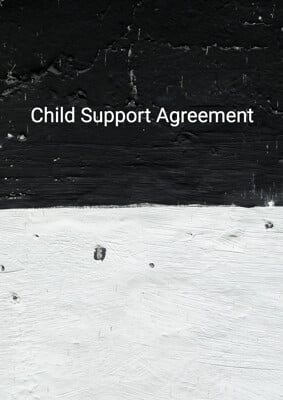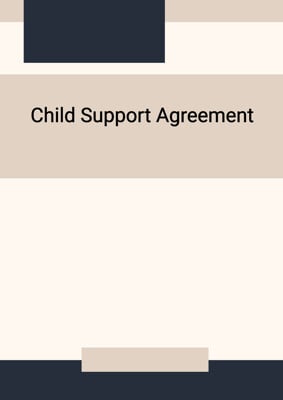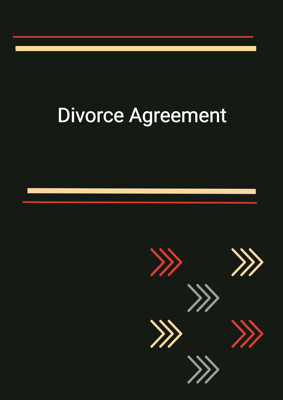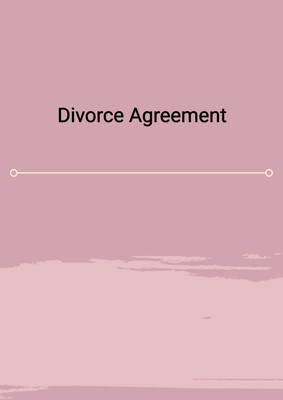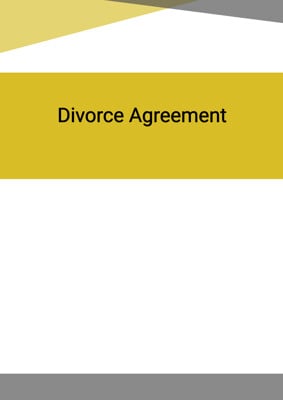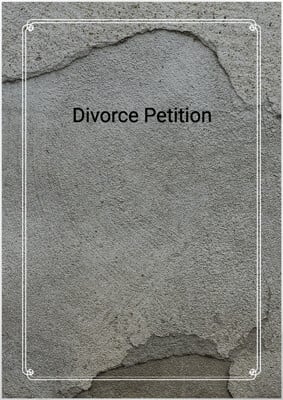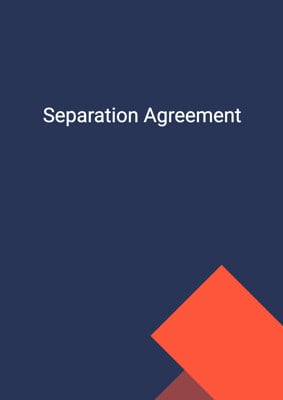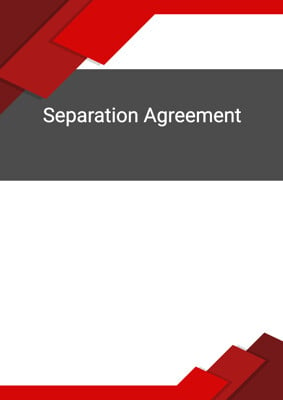How to Tailor the Document for Your Need?
01
Create Document
Fill in the details of the parties. You can click the "Fill with Member’s Information" button to complete it with information saved to your account.
02
Fill Information
Please fill in any additional information by following the step-by-step guide on the left hand side of the preview document and click the "Next" button.
03
Get Document
When you are done, click the "Get Document" button and you can download the document in Word or PDF format.
04
Review Document
Please get all parties to review the document carefully and make any final modifications to ensure that the details are correct before signing the document.
Document Preview
Document Description
The Divorce Agreement is a legal document that outlines the terms and conditions for the dissolution of a marriage. It is important as it provides a clear and legally binding agreement between the parties involved. The document begins with a brief introduction, stating that it is a divorce agreement made between Party 1 and Party 2 on the current date.
The first section of the document provides information about the marriage, stating that Party 1 and Party 2 were lawfully married at the Marriage Registry. It also mentions that both parties have cohabited at a specific address and are domiciled in a particular jurisdiction state.
The second section provides details about the parties involved. It states that Party 1 is engaged in a specific occupation and currently resides at a specific address. Similarly, Party 2 is engaged in a specific occupation and resides at a different address.
The third section states that the marriage has broken down irretrievably, indicating that there is no possibility of reconciliation. It also mentions that there is one child of the family, providing the child's name, date of birth, and address.
The fourth section clarifies that no other child has been born during the marriage and that there are no agreements or arrangements for the support of Party 2 and the child.
The fifth section states that there have been no previous proceedings in any court regarding the marriage or the child of the family.
The sixth section highlights that the parties have lived apart for a continuous period of at least one year preceding the presentation of this agreement. Both parties consent to the divorce being filed in the court of jurisdiction state.
The agreement then proceeds to outline the terms and conditions agreed upon by both parties. It states that the marriage may be dissolved and grants custody of the child to Party 1, with reasonable access to Party 2. It also allows the child to remain out of the jurisdiction of the jurisdiction state.
If there is an annual maintenance amount specified, the agreement includes a clause stating that Party 2 will pay a nominal maintenance amount to Party 1 on an annual basis until Party 1's remarriage or the joint lives of the parties, whichever is shorter. The agreement also states that the costs of the divorce will be borne equally by both parties.
The document is dated with the current date and requires the signatures of both parties.
How to use this document?
1. Provide information: Enter the names of both parties and the current date in the agreement. This ensures that the agreement is specific to the parties involved and reflects the current date.
2. Specify marriage details: Include the date and place of the marriage, as well as the marriage registry's name and location. This provides a clear record of the marriage.
3. Describe cohabitation: State the address where both parties have cohabited. This confirms that both parties have lived together.
4. Establish domicile: Mention the jurisdiction state where both parties are domiciled. This establishes the legal jurisdiction for the divorce.
5. Provide party details: Specify the occupations and current addresses of both parties. This provides information about their current circumstances.
6. State irretrievable breakdown: Clearly state that the marriage has broken down irretrievably. This indicates that there is no possibility of reconciliation.
7. Outline child details: Provide the name, date of birth, and address of the child. This establishes the child's identity and place of residence.
8. Confirm no other children: State that no other child has been born during the marriage. This ensures clarity regarding the children involved.
9. Declare no support agreement: Confirm that no agreement or arrangement has been made for the support of Party 2 and the child. This clarifies the financial responsibilities.
10. Verify no previous proceedings: State that there have been no previous court proceedings related to the marriage or the child. This ensures that the agreement is the first legal action taken.
11. Establish separation period: Clearly state that the parties have lived apart for at least one year before presenting the agreement. This confirms the eligibility for divorce.
12. Agree on divorce: Both parties should agree that the marriage may be dissolved. This indicates their mutual consent.
13. Determine child custody: Grant custody of the child to Party 1, with reasonable access to Party 2. This establishes the child's living arrangements.
14. Allow child to remain out of jurisdiction: Provide permission for the child to reside outside the jurisdiction of the jurisdiction state. This allows flexibility in the child's residence.
15. Specify maintenance amount (if applicable): If there is an annual maintenance amount, state that Party 2 will pay a nominal maintenance to Party 1. Include the rate and duration of the payments. This ensures financial support for Party 1.
16. Share divorce costs: Agree that the costs of the divorce will be shared equally by both parties. This establishes financial responsibility.
17. Sign the agreement: Both parties should sign the agreement to indicate their consent and agreement to the terms outlined.
Not the right document?
Don’t worry, we have thousands of documents for you to choose from:



